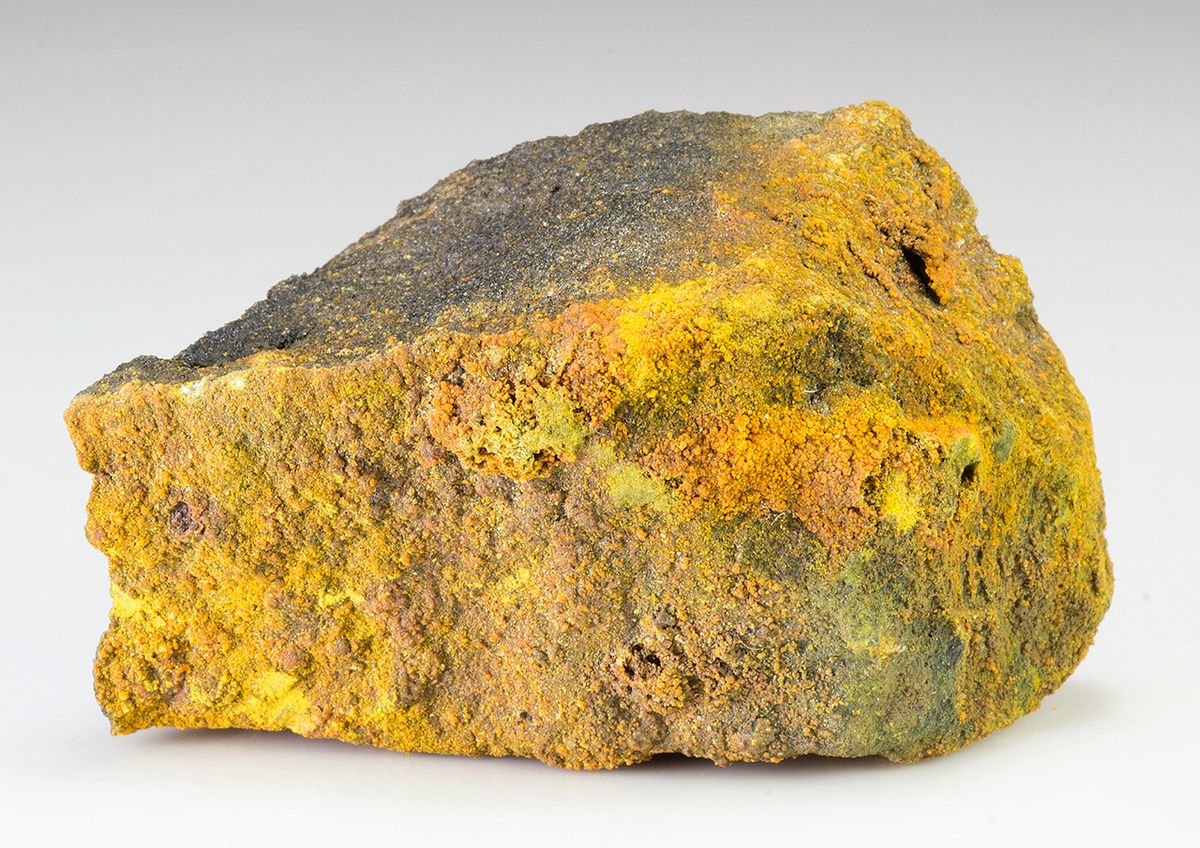
Pascoite is a rare mineral that catches the eye with its vibrant orange color. Found primarily in arid regions, this mineral is composed of hydrated calcium vanadate. Pascoite forms in the oxidized zones of vanadium-bearing deposits, making it a fascinating subject for geologists and mineral enthusiasts alike. Its unique crystal structure and striking appearance make it a prized specimen for collectors. Did you know that Pascoite was first discovered in the Pasco Province of Peru? This mineral not only adds a splash of color to collections but also provides valuable insights into geological processes. Ready to learn more? Here are 30 intriguing facts about Pascoite that will deepen your appreciation for this captivating mineral.
Key Takeaways:
- Pascoite is a rare, bright orange mineral with high water content. It forms in arid regions and is important for studying vanadium deposits and Earth's geochemical processes.
- Collectors love Pascoite for its rarity and striking color, but it's delicate and can dehydrate, so it needs careful storage. It also glows under UV light!
What is Pascoite?
Pascoite is a rare mineral with a fascinating history and unique properties. Found in specific geological settings, it has intrigued scientists and collectors alike. Here are some intriguing facts about this mineral.
- Pascoite is a hydrated calcium vanadate mineral.
- It was first discovered in Pasco Province, Peru, which is how it got its name.
- The mineral's chemical formula is Ca3V10O28·17H2O.
- Pascoite typically forms in oxidized zones of vanadium-bearing deposits.
- It often appears as bright orange or yellow crystals.
- The mineral is known for its high water content, with 17 molecules of water per formula unit.
- Pascoite is soluble in water, making it quite delicate.
- It has a monoclinic crystal system, meaning its crystal structure is asymmetric.
- The mineral's hardness on the Mohs scale is about 2, making it quite soft.
- Pascoite has a vitreous luster, giving it a glass-like appearance.
Where Can You Find Pascoite?
Pascoite is not found everywhere. Its occurrence is limited to specific geological environments. Here are some places where this mineral can be found.
- Besides Peru, Pascoite has been found in the United States, particularly in Utah and Colorado.
- It is often associated with other vanadium minerals like volborthite and metamunirite.
- Pascoite is typically found in arid, desert regions where evaporation concentrates vanadium.
- The mineral is usually located in mine dumps or oxidized zones of vanadium deposits.
- It can also be found in secondary mineral deposits, formed from the alteration of primary vanadium minerals.
Why is Pascoite Important?
Pascoite has several interesting properties and uses that make it significant in various fields. Here are some reasons why this mineral is important.
- Pascoite is studied for its unique crystal structure and hydration properties.
- It serves as an indicator mineral for vanadium deposits, helping geologists locate vanadium ores.
- The mineral is used in scientific research to understand vanadium's behavior in the environment.
- Pascoite is a collector's item due to its rarity and striking color.
- It provides insights into the geochemical processes that concentrate vanadium in the Earth's crust.
How is Pascoite Formed?
The formation of Pascoite involves specific geological processes. Understanding these processes can provide insights into the mineral's characteristics.
- Pascoite forms through the oxidation of vanadium-bearing minerals in the presence of calcium.
- The mineral typically forms in arid climates where evaporation rates are high.
- It can also form through the weathering of primary vanadium minerals, leading to secondary mineral deposits.
- Pascoite's formation is influenced by the pH and redox conditions of the environment.
- The presence of calcium-rich solutions is crucial for the formation of Pascoite.
Interesting Facts About Pascoite
Pascoite has some unique and lesser-known characteristics that make it even more fascinating. Here are a few more interesting facts.
- Pascoite can dehydrate when exposed to air, losing its water content and altering its appearance.
- The mineral can be fluorescent, glowing under ultraviolet light.
- Pascoite is often found in microscopic crystals, making it challenging to study.
- It has a low specific gravity, meaning it is relatively light for its size.
- Pascoite's bright color can fade over time if exposed to light, requiring careful storage by collectors.
The Final Word on Pascoite
Pascoite is a fascinating mineral with a rich history and unique properties. Its vibrant orange color and rarity make it a prized specimen for collectors. Found primarily in arid regions like Utah, pascoite forms in the oxidized zones of vanadium deposits. This mineral is not just a pretty face; it has practical applications in the field of chemistry, particularly in the study of vanadium compounds.
Understanding pascoite helps us appreciate the complexity and beauty of Earth's geological processes. Whether you're a seasoned geologist or just someone with a curiosity for minerals, pascoite offers a glimpse into the intricate world of mineralogy. So next time you come across this striking mineral, you'll know a bit more about its origins and significance. Keep exploring and who knows what other hidden gems you'll uncover in the world of minerals!
Frequently Asked Questions
Was this page helpful?
Our commitment to delivering trustworthy and engaging content is at the heart of what we do. Each fact on our site is contributed by real users like you, bringing a wealth of diverse insights and information. To ensure the highest standards of accuracy and reliability, our dedicated editors meticulously review each submission. This process guarantees that the facts we share are not only fascinating but also credible. Trust in our commitment to quality and authenticity as you explore and learn with us.
